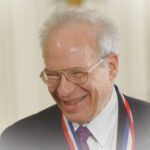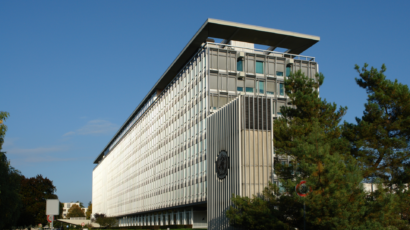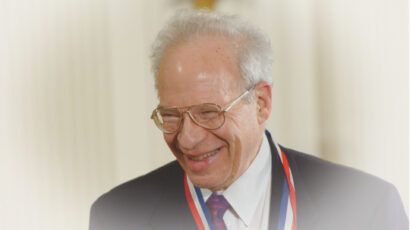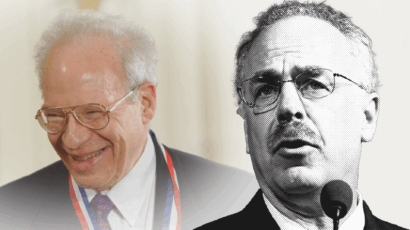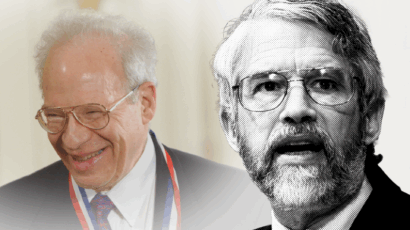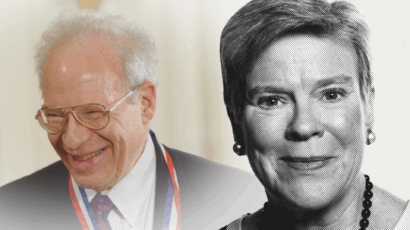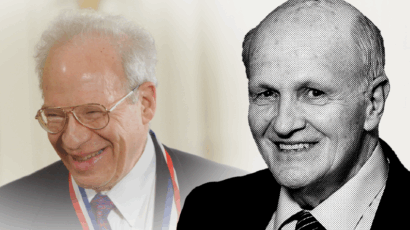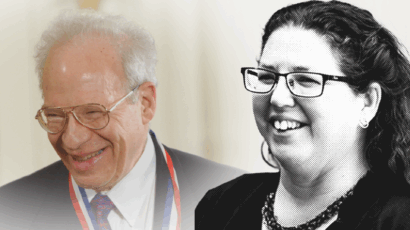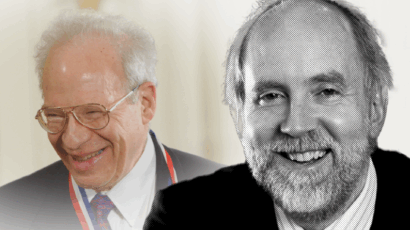North Korea and Myanmar: A match for nuclear proliferation?
By Catherine Boye, Melissa Hanham, Robert Shaw | September 27, 2010
Is Myanmar developing nuclear weapons, perhaps with the help of North Korea? That worrisome possibility, prompted by Myanmar’s receipt of dual-use technology via an illegal North Korean procurement network, has garnered considerable speculation. Compelling evidence amassed in reports published this year by the Institute for Science and International Security (ISIS), the Democratic Voice of Burma (DVB), Jane’s Intelligence Review, and Al Jazeera indicates that, as the ISIS report put it, “There remain sound reasons to suspect that the military regime in Burma [Myanmar] might be pursuing a long-term strategy to make nuclear weapons.”1
The possible existence of such a program cannot and should not be discounted, but it is far from the only explanation that can account for Myanmar’s unusual imports. The dual-use technology sent to Myanmar — including a cylindrical grinder and magnetometer — are considerably beyond the country’s current technical capabilities, according to the DVB report. Such sophisticated devices, which could be used to produce nuclear- or missile-related parts, may point to a well-planned, long-term nuclear weapons program, perhaps assisted by North Korea.
However, alternate explanations also warrant consideration to better understand the nature of DPRK-Myanmar trade in such technologies. Plausible alternative scenarios include the use of Myanmar as a transshipment hub for items ultimately destined for North Korea, an evolving conventional missile program, procurement errors or other planning missteps, or some combination of these possibilities.
Myanmar as a transshipment hub. In late 2009, the Yokohama District Court in Japan found the president of Toko Boeki (a small Tokyo-based trading company) guilty of coordinating illegal WMD-related exports to Myanmar.2 Investigators determined that Toko Boeki had acquired cylindrical grinders and a magnetometer at the behest of New East International Company, a North Korean front company based in Hong Kong.3 Although New East International directed Toko Boeki to deliver the equipment to Myanmar, it is possible that the devices were not intended to remain there; Myanmar may have been a transfer point before the goods were shipped to another location — perhaps even North Korea.
Indeed, Myanmar has distinct advantages to North Korean procurement networks that want to circumvent sanctions and illegally divert dual-use equipment to Pyongyang. (See Editor’s Note.) Although it is also subject to sanctions, Myanmar is not as isolated as North Korea, and legitimate shipments originating from Japan, for example, can provide suitable cover for WMD-related deliveries.
In addition, Myanmar’s flourishing illegal trade networks — including drug and human trafficking — represent a familiarity with the kind of knowledge required to covertly transship deliveries to countries with more advanced WMD programs (such as North Korea). The rampant corruption associated with the military regime further enables illicit trade.
The revival of diplomatic and military relationships between Myanmar’s ruling junta and Pyongyang is another reason to consider whether North Korea, and not Myanmar, may have been the final destination for the dual-use equipment.4 Chartered or diplomatic air transport, necessary to ferry officials between capitals, is less susceptible to interdiction, offering an ideal conduit for the transfer of some types of dual-use equipment from Myanmar to North Korea. A UN panel of experts on Resolution 1874 (which strengthened sanctions on North Korea after its second nuclear test) highlighted such a scenario in a May 2010 report, suggesting that Pyongyang may turn to illicit air cargo shipments as a preferred mode of transport for its illegal trade.
A conventional missile program. Myanmar may be an ideal transshipment hub, but reports from ISIS and DVB indicate that dual-use machine tools from Japan and Europe are not simply being stored in Myanmar, but also used there. This could indicate that the devices may actually be intended for use in Myanmar’s indigenous missile program.
Although Myanmar’s overall technological development appears limited in comparison with North Korea, the majority of the questionable dual-use items received by Myanmar may truly be for its own missile development effort. Acquisition of conventionally armed short- and medium-range ballistic missiles would provide the junta with a significant strategic advantage over regional and domestic rivals, and short-range missiles could be useful to fight insurgent groups that challenge the junta’s authority.5
Further, Myanmar’s defense industry already produces artillery and mobile rocket launchers, and the country reportedly has spent more than a decade improving its missile production capabilities.6 This practical experience could facilitate Myanmar’s eventual creation of larger missiles, such as Scarabs or early Scud derivatives. Myanmar cannot yet produce these missiles, but the equipment identified in the Toko Boeki case and in the DVB report could be used to help it develop more advanced missile designs.
Alternative scenarios. It is also possible that, after some of the questionable dual-use equipment had already been received, a North Korea-Myanmar proliferation relationship fell into disarray due to the enormous complexity that plagues all WMD programs. Payment disputes (similar to those that held up Myanmar’s negotiations with Russia for a 10 megawatt research reactor) could be one cause.7 Myanmar’s acquisition of equipment beyond its technical capabilities could also be explained by a procurement error or an overestimation of indigenous know-how, as the DVB report acknowledges. In 2002, Myanmar expressed interest in buying a mini-submarine from Pyongyang, according to Jane’s, but abandoned the idea due in part to its lack of expertise.8
The transfer of such advanced equipment could also be an example of aggressive sales of unsuitable technology to a naïve junta, similar to Geoffrey Forden’s suggestion that North Korea has been selling subpar missile technology to states in the Middle East. It is also plausible that a core group of scientists has the ear of the junta — as well as its funding — and may have over-promised deliverables. These scientists might include U Thaung, the pro-nuclear energy minister of science and technology, and Ko Ko Oo, who is director general of the Department of Atomic Energy and former director of the Department of Technical and Vocational Education (DTVE). The two departments shared the same address, phone number, and fax number until Myanmar’s capital was moved to Naypidyaw, and the DTVE is an end-user of some of the questionable dual-use equipment that Myanmar has acquired, according to ISIS.9
Another possible scenario is that Myanmar could be “warehousing” devices for North Korea under a barter agreement that allows Myanmar to train personnel on the dual-use equipment (and thereby gain valuable hands-on experience with the devices) before it is ultimately moved to North Korea. It is possible that Myanmar may even be viewed as an offshore production hub for transfer of items to North Korea or other interested parties. Sanctions make it nearly impossible for Pyongyang to acquire controlled, technically advanced equipment that requires installation and maintenance by foreign technicians; North Korea and Myanmar may have therefore collaborated to purchase the equipment, install it in Myanmar, and use the machines to produce advanced missile or nuclear parts that could then be more easily routed via air cargo to North Korea (or elsewhere).
Conclusion. The possibility that Myanmar is pursuing a nuclear weapons program is just one of many potential explanations for its importation of technologically advanced dual-use items. The alarming prospect of a nuclear-armed Myanmar cannot be ignored, but neither should it prevent the assessment of other feasible scenarios. More research is needed to determine precisely why Myanmar received questionable dual-use items and to discover their final destination, if Myanmar is a transshipment point. Export control regimes should take note of the potential for diversion of dual-use items through Myanmar, and to protect regional stability, governments in Asia should reexamine their trade policies toward the Southeast Asian country.
Editor’s Note: Pyongyang’s illegal networks are examined in a companion article, “Taking Control: Stopping North Korean WMD-Related Procurement,” in the September/October 2010 digital issue of the Bulletin.
1 The most recent report is Robert Kelley and Allison Puccioni, “Atomic Revelation: Defector Reveals Myanmar’s Nuclear Programme,” Jane’s Intelligence Review, July 20, 2010.
2 “Japanese Man Sentenced over Nuclear Arms-convertible Exports to Burma from Japan,” Kyodo World News Service via BBC Monitoring Asia-Pacific, 5 November 2009 in LexisNexis, www.lexis-nexis.com.
3 For details on the Toko Boeki case, see “3 Held Over Export Bid of DPRK Missile Know-how to Myanmar,” Daily Yomiuri, June 30, 2009; “Arrested Korean trader in Tokyo also tied to export to Myanmar,” Jiji Press, July 24, 2009; “3 Execs Arrested for Attempting to Export ‘Dual-Use’ Technology to Myanmar,” Mainichi Daily News Online, June 30, 2009; “Firm Tied to Past Myanmar Exports; N. Korea-affiliated Toko Boeki May Have Illegally Shipped Missile Devices,” Daily Yomiuri, July 2, 2009; “Kitachousengawa ga Seinou Komakaku Shitei, Myanmaa heno Fuseiyushutsu (North Korea seeks technology with detailed specifications for illegal exports to Myanmar),” Kyodo Tsuushin News, July 24, 2009; “Kitakei-shousha-no-Fuseiyushutsu, Shachou-ra-Gaitamehouihan-de-Kiso (North Korean Trading Company’s Illegal Export: Company President Is Indicted in Violation of the Foreign Exchange and Foreign Trade Law),” Yomiuri Online, July 21, 2009.
4 Myanmar and North Korea re-established diplomatic relations in 2007, although there are indications that earlier military trade between the two countries took place in 2006. See Bertil Linter, “Clouded Alliance: North Korean and Myanmar’s Covert Ties,” Jane’s Intelligence Review, September 17, 2009.
5 This could be especially true if the missiles were fitted with the chemical weapons that Myanmar has been accused of producing. See “Production Capability (Myanmar), Chemical,” Jane’s CBRN Assessments, March 18, 2010.
6 Jane’s Information Group, “Defence production and R & D (Myanmar), Defence production and R & D”, Jane’s Sentinel Security Assessment – Southeast Asia, December 11, 2009.
7 See also Aung Zaw, “Burma Plays Nuclear Card,” The Irrawaddy, July 2007, vol. 15, no. 7.
8 Bertil Linter, “Clouded Alliance: North Korean and Myanmar’s Covert Ties,” Jane’s Intelligence Review, September 17, 2009
9 See also David Albright, Paul Brannan, Robert Kelley, and Andrea Scheel Stricker, “Burma: A Nuclear Wannabe, Suspicious Links to North Korea and High-Tech Procurements and Enigmatic Facilities.” Institute for Science and International Security, January 28, 2010.
Together, we make the world safer.
The Bulletin elevates expert voices above the noise. But as an independent nonprofit organization, our operations depend on the support of readers like you. Help us continue to deliver quality journalism that holds leaders accountable. Your support of our work at any level is important. In return, we promise our coverage will be understandable, influential, vigilant, solution-oriented, and fair-minded. Together we can make a difference.
Topics: Nuclear Weapons, Opinion



